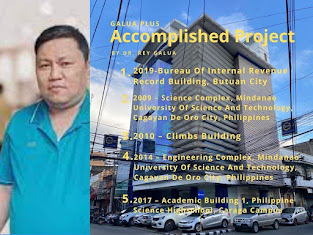AES BIOFLUX
An assessment of sustainability of a green residential building in an urban setting: focus in Pueblo de Oro, Cagayan de Oro City
1 Architect Rey Galua, 2Ermelinda G. Tobias
1 College of Engineering and Architecture, Mindanao University of Science and Technology, Cagayan de Oro City, Philippines; 2 Department of Biological Sciences, College of Science and Mathematics, MSU-Iligan Institute of Technology, Iligan City,
Philippines. Corresponding author: R. D. Galua, rgaluasds@gmail.com
Abstract. A study of the technical, economic, environmental and architectural aspects of green residential building situated in an urban location has been performed. The results of the study revealed the following: the building has been observed to be properly oriented with minimum levels of lighting consumption and sufficient lighting designs, and that with the implementation of the green rooftop, restoration and plantation of different species of plants a considerable amount of carbon has been offset for the growing of the plant at approximately 470 tons of carbon for the 20-year time horizon. As to the elements of sustainable energy use, the energy usage of the green building has been compared with that of the traditional building. The results have indicated that green building has reduced its energy consumption of approximately 40% per unit of floor area when compared with that of the traditional building design. In terms of energy savings, it has been projected that due to the use of the foregoing strategies, the green building can save up to 1,800 kilowatt-hours of energy annually, and the increased construction cost due to the application of these strategies may be recovered at approximately eleven years of operation of the building. In the selection and conservation of resources associated to the construction of the green building, the study revealed that when compared to the traditional building, it has the potential to reduce approximately 40% associated carbon dioxide emissions and 40% primary energy for the construction of the green building. The calculated estimates reveal that with this strategy, it can mitigate approximately 21,000 kg of carbon dioxide emitted to the environment and approximately 2,100 gigajoule of primary energy is avoided; as to building’s indoor environmental quality, the results of the study indicates that the resulting design have achieved the maximum natural ventilation possible. As to acceptability of the green building, the survey results as per statistical analyses revealed high level of acceptance of respondents in terms of the overall satisfaction features, the general and the specific features and the given psychological indicators of the design. Read More
Source: AES BIOFLUX
Related Post: Who is REY D. GALUA?





Comments
Post a Comment